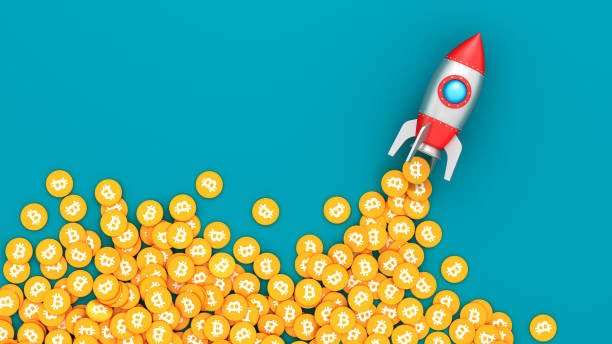In a world where the banking and fintech industries are seeking innovative ways to enhance transaction efficiency, J.P. Morgan has introduced the JPM Coin. Unlike traditional cryptocurrencies, this blockchain-powered stablecoin is tethered to the U.S. dollar and serves as a catalyst for instant payments. In a recent milestone, its utility has expanded to include euro transactions, accounting for a staggering $300 billion in transaction volume since its inception.

Though it’s not a tradable asset for the masses, limited to institutional use for crypto, USD, and now Euro exchanges, it sparks debates. Some question its necessity, drawing comparisons to conventional bank payment procedures, while others laud it as a swifter, more streamlined alternative to systems like SWIFT. J.P. Morgan has hinted at a forthcoming blockchain-based deposit token, pending regulatory approval, signaling a pivotal stride towards widespread blockchain integration in the financial realm.
Understanding the JPM Coin
Umar Farooq, the Head of Digital Treasury Services and Blockchain at J.P. Morgan, characterized the JPM Coin as “a digital coin designed to facilitate instant payments using blockchain technology.”
He further explained that the JPM Coin’s primary purpose is to enable immediate value transfers between parties possessing bank accounts, and it is a stablecoin tethered 1:1 to the US dollar.
The technology underpinning the JPM Coin is built on the Quorum Blockchain, a proprietary network developed by J.P. Morgan that originally served as a private adaptation of the Ethereum network. Subsequently, Ethereum venture studio ConsenSys acquired Quorum, with J.P. Morgan becoming a client of the blockchain firm.
The JPM Coin’s core functionality is supported by this technological framework, described on the company’s official website as “a permissioned system that acts as a payment rail and deposit account ledger, allowing participating J.P. Morgan clients to transfer US Dollars held on deposit with J.P. Morgan within the system, facilitating the movement of liquidity funding and payments in real-time.”
Expanding upon this digital innovation, J.P. Morgan introduced Coin Systems as part of Onyx, the division responsible for the firm’s primary blockchain and digital currency initiatives. Coin Systems is dedicated to building financial infrastructure and delivering corporate treasury solutions.
Initially designed for transactions primarily denominated in US dollars, JPM Coin’s capabilities were extended in 2023 to encompass euro-denominated transactions. Siemens AG, a prominent engineering and manufacturing company based in Germany, marked a significant milestone on June 23, 2023, as the first entity to leverage JPM Coin for euro-denominated payments, a development confirmed by Basak Toprak, who heads J.P. Morgan’s Coin Systems for the Europe, Middle East, and Africa regions.
How the JPM Coin Works
The JPM Coin serves as a critical settlement intermediary between J.P. Morgan and its clients. The process commences with a J.P. Morgan client initiating a fund transfer to a designated account. Subsequently, the client is issued an equivalent amount in JPM coins.
Once in possession of JPM Coins, clients can utilize these digital tokens to streamline transactions conducted on the Quorum blockchain. The final phase of the process allows recipients of JPM Coins to redeem them for either US dollars or euros, providing flexibility.
The inherent advantage of conducting these transactions on a blockchain network is the substantial cost savings achieved in contrast to traditional transaction methods, coupled with significantly accelerated settlement speeds.

How to buy JPM Coin
JPM Coin operates on a privately-commissioned blockchain, catering exclusively to a select group of institutional clients within the multinational bank. Unlike conventional blockchain-based digital currencies such as Bitcoin or Ethereum, it’s not available for purchase on digital asset exchanges.
While J.P. Morgan has plans to broaden its coin’s accessibility to account holders, it’s important to emphasize that retail-level access and support for over-the-counter (OTC) trading with this stablecoin aren’t in the works.
If you’re considering JPM Coin as an investment, reconsider your approach. Being a dollar-backed stablecoin, its value remains pegged to the U.S. dollar, and it doesn’t experience the price fluctuations seen with many other tokens in the market.
However, if you’re seeking stability and a store of wealth in your portfolio, there are alternative stablecoin projects that may better suit your needs.
Importantly, investing in JPM Coin itself is not a prerequisite to benefiting from J.P. Morgan’s successes in its usage. Any positive outcomes stemming from the growth of JPM Coin will be reflected in the bank’s revenues and earnings.
In practical terms, this means that considering an investment in $JPM stock to ride the JPM coin wave could be a viable strategy. This approach allows retail investors to partake in the revenue generated by institutional clients utilizing JPM Coin and J.P. Morgan’s financial systems.
JPM Coin: Defining its Status in the Cryptocurrency World
In the wake of J.P. Morgan’s announcement, the digital currency community engaged in extensive discussions about the stablecoin’s characteristics and its classification as a cryptocurrency. J.P. Morgan conveyed the following statement:
“J.P. Morgan acknowledges that the JPM Coin doesn’t qualify as traditional currency. Rather, it serves as a digital representation of United States Dollars securely held in specified accounts at J.P. Morgan Chase N.A. To put it succinctly, each JPM coin maintains a value equivalent to one U.S. dollar.”
Given its controlled and internally managed nature, coupled with transaction validation by the bank, there has been speculation within the community regarding the suitability of JPM Coin for the cryptocurrency category.
Furthermore, there have been inquiries into the coin’s specific purpose, as conventional banking institutions already handle payments in a similar manner. The JPM Coin, however, positions itself as a solution to the SWIFT payment system, offering faster settlement times, reduced costs, and minimized error rates.
Learn from market wizards: Books to take your trading to the next level

 Hot Features
Hot Features













